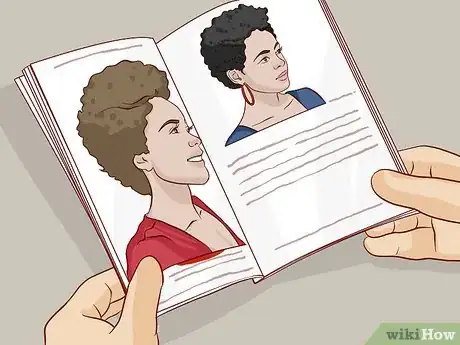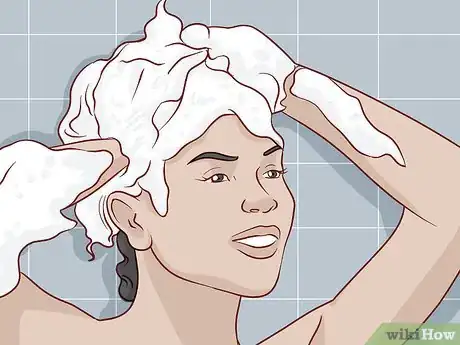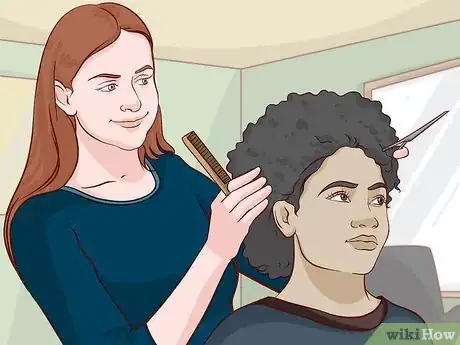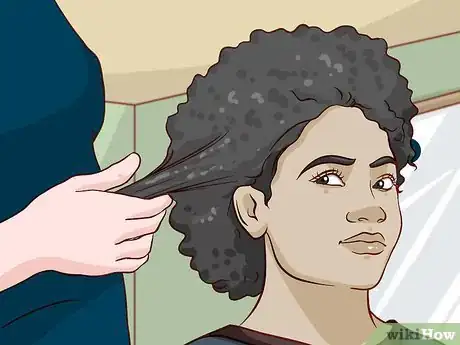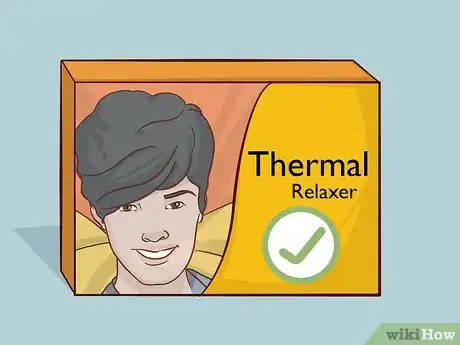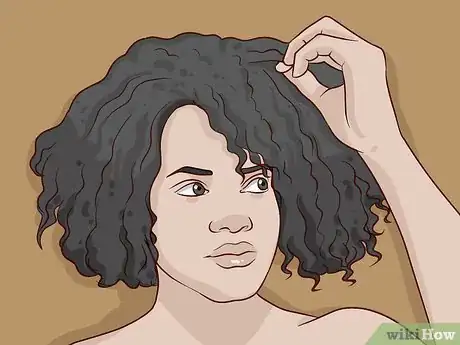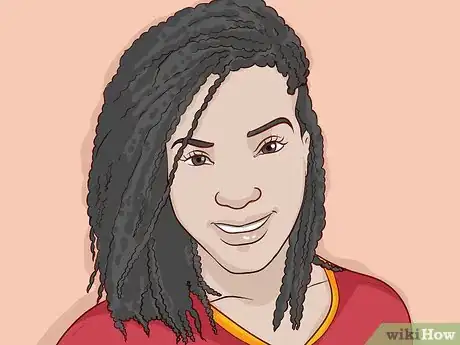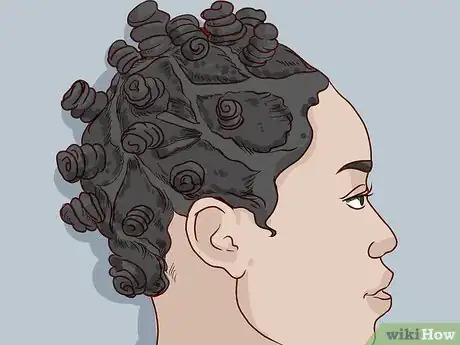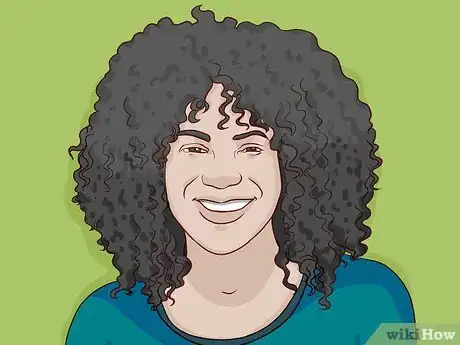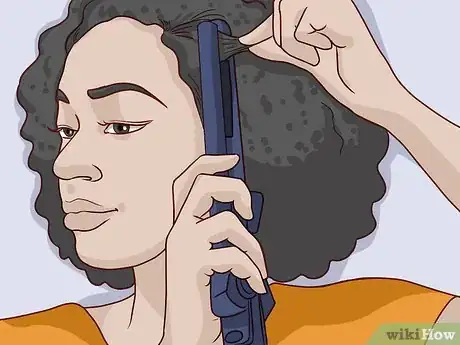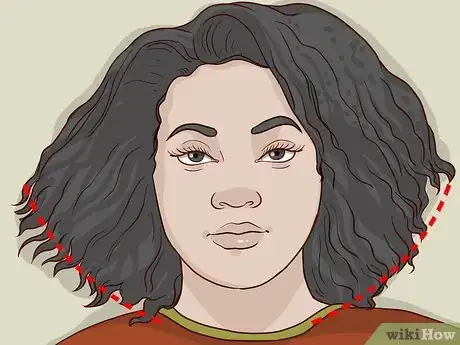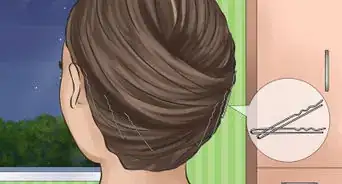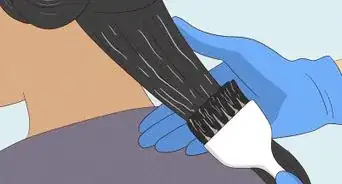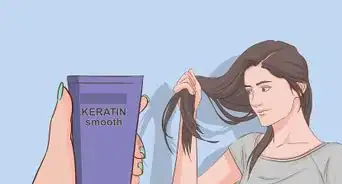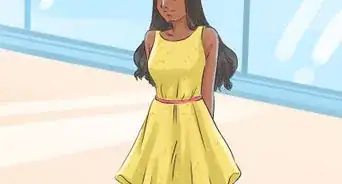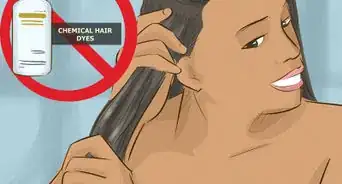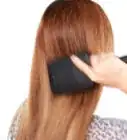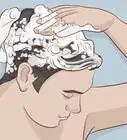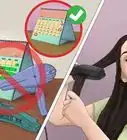This article was co-authored by Tiffany Pate and by wikiHow staff writer, Hannah Madden. Tiffany Pate is a Licensed Cosmetologist and the Owner and CEO of Pretty Professional Hair based in Tampa, Florida. With more than 17 years of experience, she specializes in wig, weave, and hair extension installation. Additionally, she provides care that maintains healthy hair.
There are 9 references cited in this article, which can be found at the bottom of the page.
This article has been viewed 20,456 times.
Relaxer is a chemical hair product applied in a salon that straightens curly hair. Unfortunately, relaxer can’t be removed from your hair once you’ve had it applied, so the only option is to wait for your hair to grow out or cut off your relaxed hair. Although it can be frustrating, going back to your natural texture can be a rewarding experience and will probably make your hair feel healthier in the long run.
Steps
Cutting Your Relaxed Hair Off
-
1Look for short hairstyles that will flatter your face. Since you'll be cutting off all of the relaxed hair, your hair will end up pretty short. That doesn't mean it can't be beautiful, though! Go online or look in magazines for pictures of people with very short hair. Try to find a haircut you like on a person that has a similar face shape to give you an idea of what the style will look like on you.
- For instance, choose a celebrity haircut like Halle Berry's. Bring a picture to the salon so your stylist knows what you're looking for.
-
2Wash your hair and allow it to dry naturally. Use shampoo and conditioner in the shower and rinse it out with cool water. Allow your hair to air dry fully. Depending on the length and thickness of your hair, this could take a few hours. Do not use any sort of heat styling tools on your hair.[1]
- Seeing your natural texture is important when you cut off your relaxed hair. This will help the stylist to see where your natural hair ends and the relaxed hair starts.
Advertisement -
3Visit a hairstylist that has experience with natural hair. Unfortunately, not every stylist knows how to deal with relaxed hair or how to cut it off the best way. Research salons in your area before visiting one to see if they know how to cut your hair type. Look at reviews or call them to ask about their services.[2]
- When you call a salon, ask something like, “Have you helped clients transition from relaxed hair to their natural texture before?”
-
4Ask the stylist to cut off all of your relaxed hair and give you a short style. Since relaxer cannot be stripped from your hair, the only way to get rid of it right away is to cut it all off. This haircut, often called the big chop, removes all of your relaxed hair and leaves your natural hair to grow out on its own. Make sure your stylist knows what your hair goals are and why you are cutting off the majority of your hair.[3]
- Often, the big chop method only removes the relaxed hair and leaves your natural hair to lay in whatever position it has grown in. That's why you'll want to have a style idea in mind when you head to the salon.[4]
Did You Know? On average, hair grows about 1⁄2 inch (1.3 cm) per month or 6 inches (15 cm) per year.
Growing out Your Relaxed Hair
-
1Allow your relaxer to revert if it wasn’t a thermal relaxer. Some relaxers, like lye-based relaxers, are not fully permanent, meaning that your hair will revert back to its natural texture over time. Depending on the type of relaxer you got, this could take 6 to 8 weeks.[5]
- If you got a thermal relaxer, your hair will not revert back to its natural texture.[6]
-
2Wait for your hair to grow out before cutting off the relaxed parts. If you’d like to have some length before you cut off your relaxed ends, you can wait for your hair to grow out some before you remove any length.[7] Depending on how fast your hair grows and how much length you would like, this can take anywhere from a few months to over a year.[8]
- The new hair that grows in will be your natural texture while the ends will still be straight.
-
3Wear your hair in a protective style to prevent breakage. Braids, weaves, and wigs are all great hairstyles to wear while you grow your hair out.[9] Get a professional to put your hair into a protective style. Make sure they know that you are trying to grow out your relaxed hair and prevent damage and breakage.[10]
- Add moisture to your scalp and roots by using hair oils to keep your hair healthy as it grows out in these styles.
-
4Make your relaxed hair curly with Nubian knots. Section all of your hair into small, 1 in (2.5 cm) pieces on your head. Separate one chunk of hair into 2 even pieces. Apply a protective hair cream to the pieces of hair with your fingers. Twist the pieces of hair around each other so that they are tightly secured. Wrap the twisted hair up onto your head to create a small bun. Secure the bun with a clip or hair tie. Let the cream in your hair dry completely for 1 to 2 hours and then undo the knots.[11]
- Protective hair cream helps to prevent breakage. You can find it at most beauty supply stores.
- This hairstyle will last about 1 week before your relaxed hair becomes straight again.
-
5Apply a wavy perm to your hair if it isn’t too damaged. Reverse the process of relaxing your hair by getting a curly perm in a salon. If you have been relaxing your hair for a long time or your hair is dry and damaged, do not get a wavy perm. It can cause your hair to become brittle and break off.[12]
- Talk to a professional hairstylist before you decide to perm your hair—it may be too damaged to handle the chemicals.
Warning: Do not perm your hair if you used a sodium-based relaxer. The ammonium hydroxide in a wavy perm could react with the sodium and cause your hair to break off.
-
6Avoid using heat on your hair to prevent further damage. As your relaxed hair grows out, you may be tempted to use heat styling tools on your hair to make the transition easier. Limit the amount of heat that you use on your hair as much as you can to encourage it to grow faster and healthier.[13]
- The healthier your hair is, the faster it will grow.
- If you do use heat styling tools on your hair, be sure to apply a heat protectant to your hair first.
-
7Trim away your relaxed hair as your natural hair grows out. Since your goal is to remove all of your relaxed hair, you can trim off the relaxed ends as soon as you feel comfortable doing so. Go to a professional hairstylist to get the best cut for you and to continue your journey toward natural hair.[14]
- There is no timeline for going natural. Everything depends on how healthy your hair is and how short you are comfortable cutting it.
References
- ↑ https://www.youtube.com/watch?v=Xubn1OCDL7I&feature=youtu.be&t=28
- ↑ https://www.youtube.com/watch?v=jlCU5sLE0eA&feature=youtu.be&t=24
- ↑ https://www.youtube.com/watch?v=jlCU5sLE0eA&feature=youtu.be&t=34
- ↑ https://www.youtube.com/watch?v=jlCU5sLE0eA&feature=youtu.be&t=43
- ↑ https://www.youtube.com/watch?v=kj8As5F6fxs&feature=youtu.be&t=12
- ↑ Tiffany Pate. Licensed Cosmetologist. Expert Interview. 9 November 2021.
- ↑ Tiffany Pate. Licensed Cosmetologist. Expert Interview. 9 November 2021.
- ↑ https://www.self.com/story/transition-tips-for-natural-hair
- ↑ Tiffany Pate. Licensed Cosmetologist. Expert Interview. 9 November 2021.
- ↑ https://www.self.com/story/transition-tips-for-natural-hair
- ↑ https://www.youtube.com/watch?v=fbDR9hEmAdU&feature=youtu.be&t=69
- ↑ https://www.youtube.com/watch?v=kj8As5F6fxs&feature=youtu.be&t=34
- ↑ https://www.self.com/story/transition-tips-for-natural-hair
- ↑ https://www.self.com/story/transition-tips-for-natural-hair
